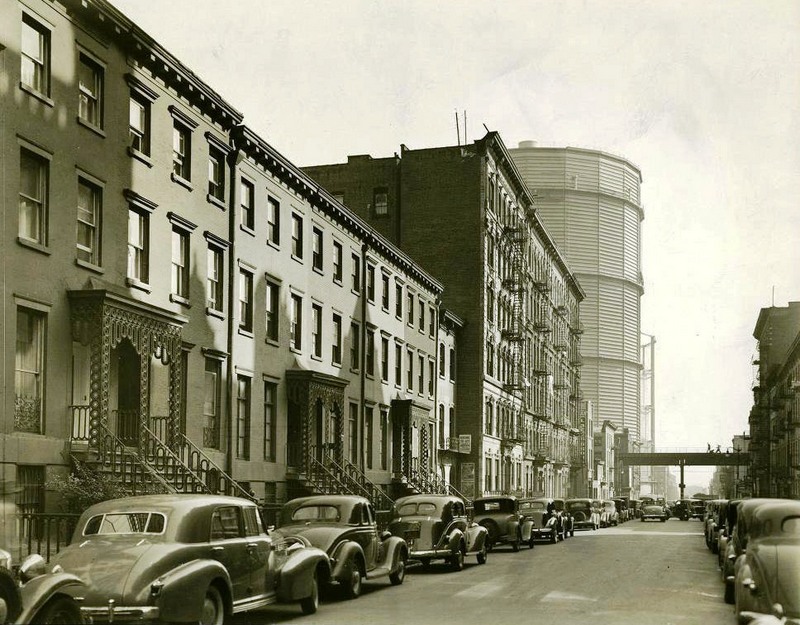
Sprawling grassy spaces dotted with trees, winding footpaths, and spaces reserved specifically for sports play are not what one thinks of when reminiscing about Manhattan. However, Stuyvesant Town, a housing development situated between East 14th St. and East 20th St. along the East River is home to each of those urban abnormalities. Colloquially referred to as StuyTown, this countryside within the city houses more than 58,000 residents in 110 red brick apartment buildings surrounding the neighborhood’s oasis: the Stuyvesant Oval Fountain. In the summer, the fountain is flanked on all sides by StuyTown residents sunbathing or enjoying a picnic on the grass. Their lives lie in the nearly identical buildings that rise in their periphery vision and the bustling city that seems so distant from within the quiet neighborhood. Here are our top 10 secrets of Stuyvesant Town:
1. The neighborhood used to be known as the Gas House District

Two large gas tanks stood in the neighborhood that is now StuyTown from the late 19th century to the early 20th century. They dominated the streets enough for the neighborhood to earn a nickname: the Gas House District. Residents of this district included Irish, German, Eastern European, Italian, and Armenian immigrants who frequently suffered from the smells and dangers of gas leaks.
After one gas tank collapsed in 1898, the other survived despite its partner killing three Gas House District residents during its demise. However, by the 1930s, the City of New York dismantled the second gas tank, opening the door for change in the neighborhood. More than 11,000 Gas House District residents lost their homes due to the construction of StuyTown. When StuyTown was completed, few of the Gas House District’s residents could afford to live in their old neighborhood because of increased rent prices compared to their destroyed tenements.





